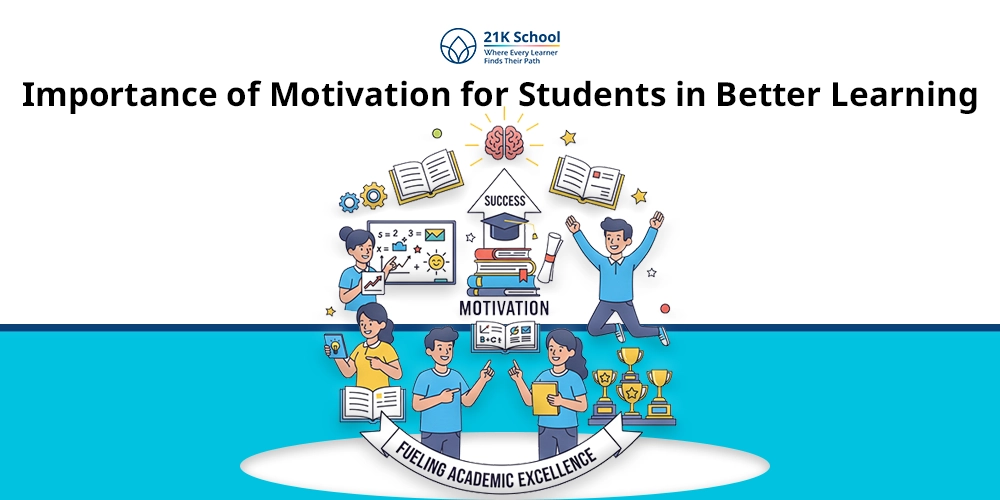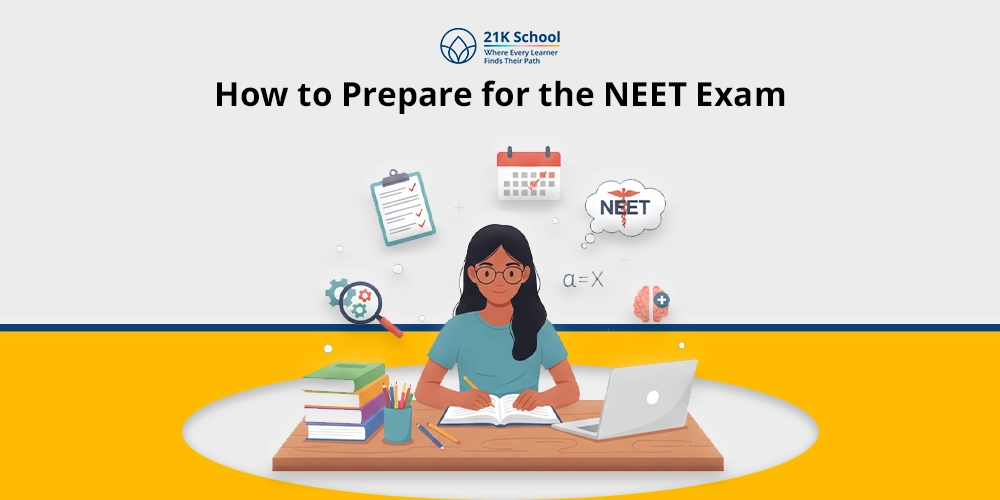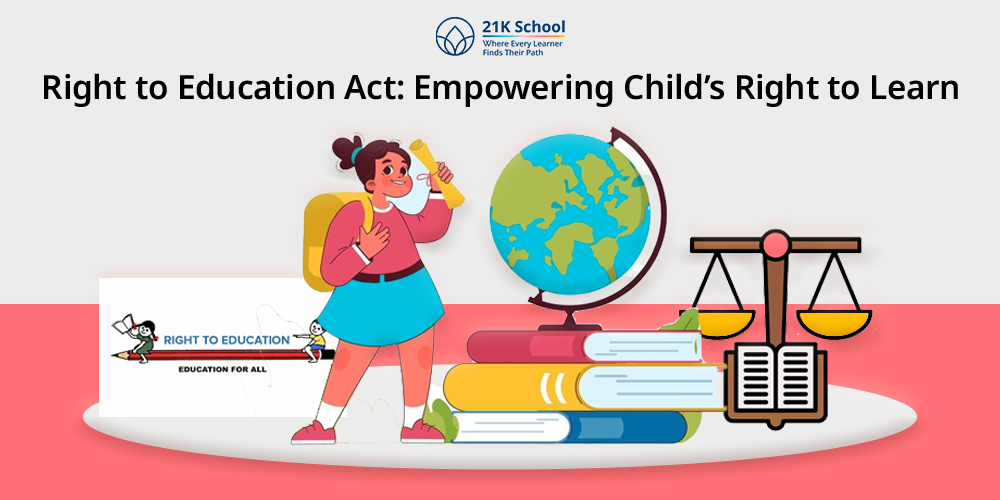
Education is a constitutional right of any human being and perhaps the most important foundation of creating a better society. The Right to Education (RTE) Act, 2009 is an iconic act in India. It provides free and compulsory elementary education to all between the ages of 6-14 years.
The law has transformed the Indian education system whose role has been to eliminate the problems of poverty, caste, and gender. Thus, affecting millions of children by impeding their accessibility to quality education.
With that being said, we must not forget that online schools provide quality education , pushing the culture ahead.
This paper outlines the importance, history, key characteristics, and challenges of the RTE Act. It delves further into the effects of the RTE Act including the comparison with the National Education Policy (NEP) 2020.
Contents
- What is the Right to Education Act?
- History of Right to Education Act
- Principal Provisions of Right to Education (RTE) Act, 2009
- 1. Free and Compulsory Education
- 2. Age-Appropriate Admission & No Detention
- 3. Neighbourhood Schools
- 4. Free of Cost and Charges
- 5. Qualification and Allocation of Teachers
- 6. Continuous and Comprehensive Evaluation (CCE)
- 7. School Management Committee (SMCs)
- 8. Banning of Screening Procedures
- 9. No Corporal Punishment, no Expulsion
- 10. Emphasis on All-Round Development
- 11. 25% Reservation Private School
- 12. Minimum Standards
- Importance of Right to Education Act
- Benefits of RTE
- Implementation & Impact of RTE in India
- RTE Act vs NEP 2020
- Challenges of Right to Education Act
- Wrapping Up Thoughts
What is the Right to Education Act?
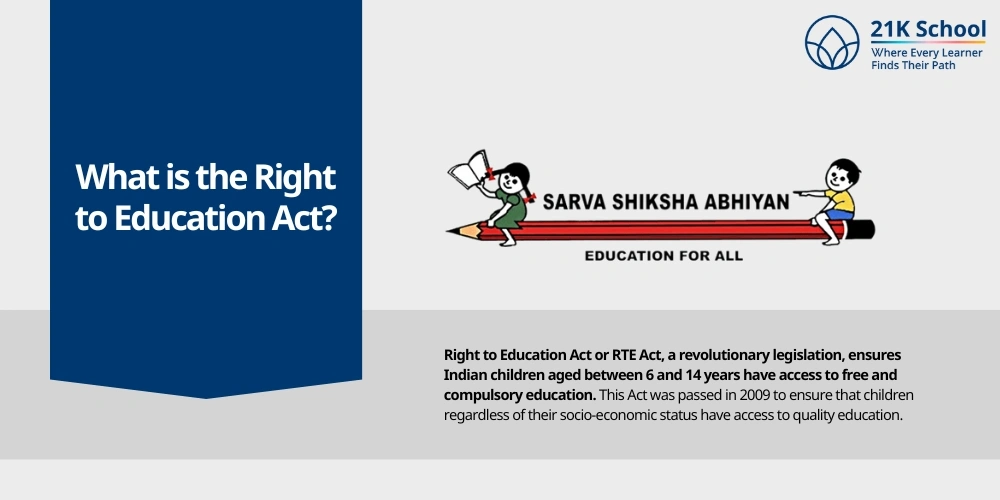
Right to Education Act or RTE Act, a revolutionary legislation, ensures Indian children aged between 6 and 14 years have access to free and compulsory education. This Act was passed in 2009 to ensure that children regardless of their socio-economic status have access to quality education.
The RTE Act aims at ensuring the right to education through legislation as one of the basic needs of the society. It claims to do it by lifting the imperfections such as schooling to the less privileged and a more open society.
Both the government and private schools are required to work under the guidelines stated in law. They do so to make education free and equitable to all the children.
The main objectives of the Act is to increase enrolment levels, decrease the rate of dropouts, and maximize learning. Systems work together to foster holistic education .
History of Right to Education Act
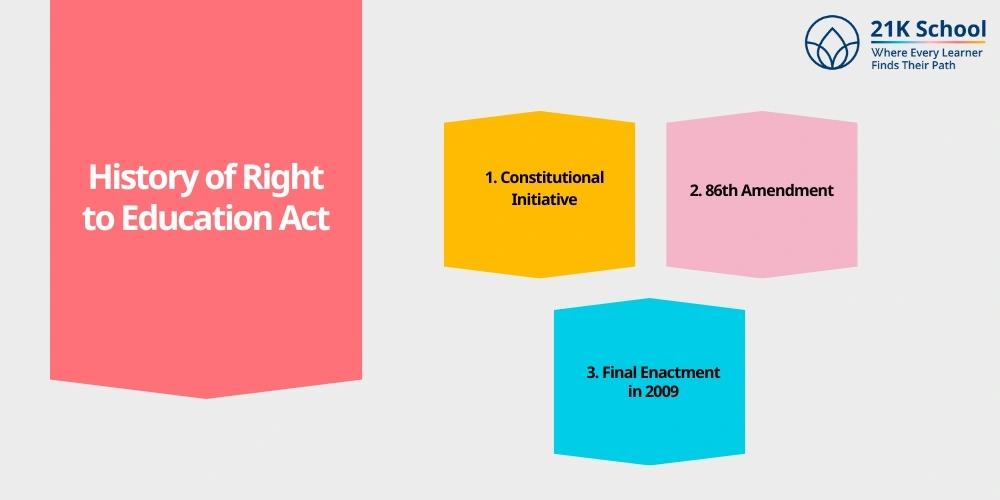
The path to the Right to Education had started a long time ago even before the Act was enacted. The most visible roots were from 2002, where the 86th amendment took place in its favour.
There were several efforts being made in India for an inclusive-all and free education. Some of the highlights follows:
1. Constitutional Initiative:
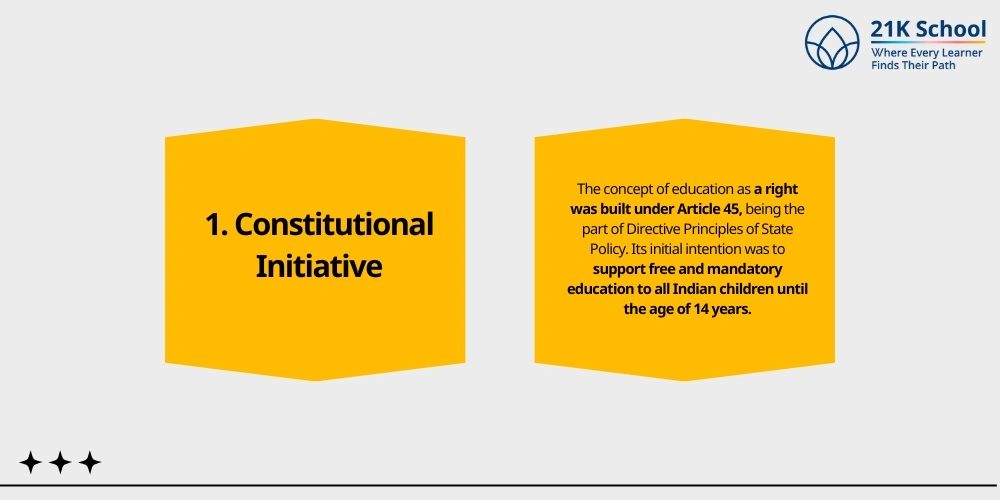
The concept of education as a right was built under Article 45, being the part of Directive Principles of State Policy. Its initial intention was to support free and mandatory education to all Indian children until the age of 14 years.
But this aim was not achieved in a number of decades owing to numerous social, economic, and infrastructure obstructions.
2. 86th Amendment:
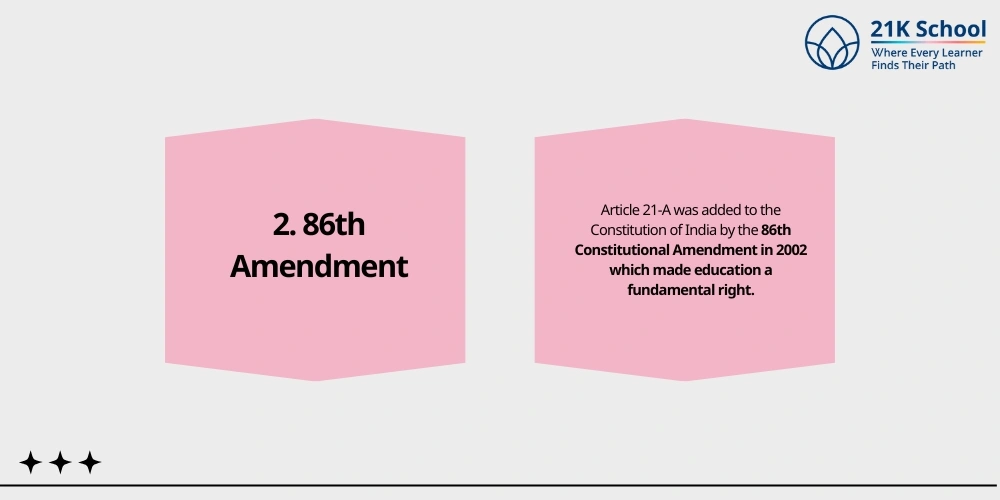
Article 21-A was added to the Constitution of India by the 86th Constitutional Amendment in 2002 which made education a fundamental right. The push through courts enforced the set up of quality education for every child.
3. Final Enactment in 2009:
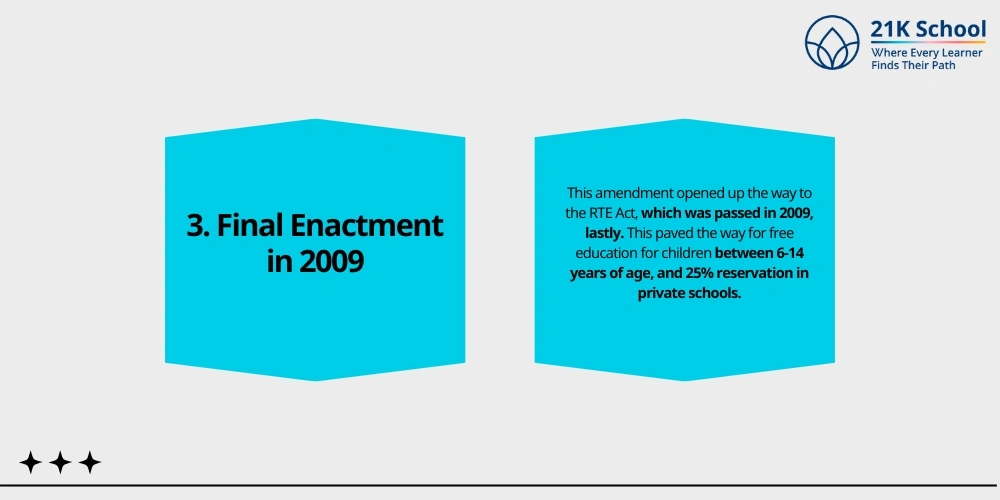
This amendment opened up the way to the RTE Act, which was passed in 2009, lastly. This paved the way for free education for children between 6-14 years of age, and 25% reservation in private schools.
People interpreted the law as a very important move towards achieving the vision of universal education in India. Thus, finally having a law dealing with the prevalence of illiteracy, dropouts and inequality in access to education.
Principal Provisions of Right to Education (RTE) Act, 2009
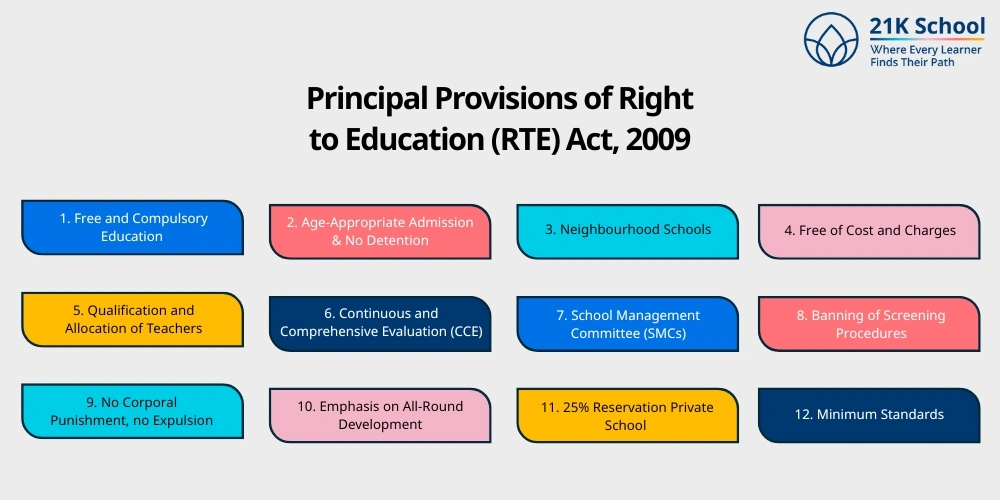
The RTE Act is elaborate and touches vast provisions to make sure that all the children are provided with good education. The main characteristics of the Act are provided below:
1. Free and Compulsory Education
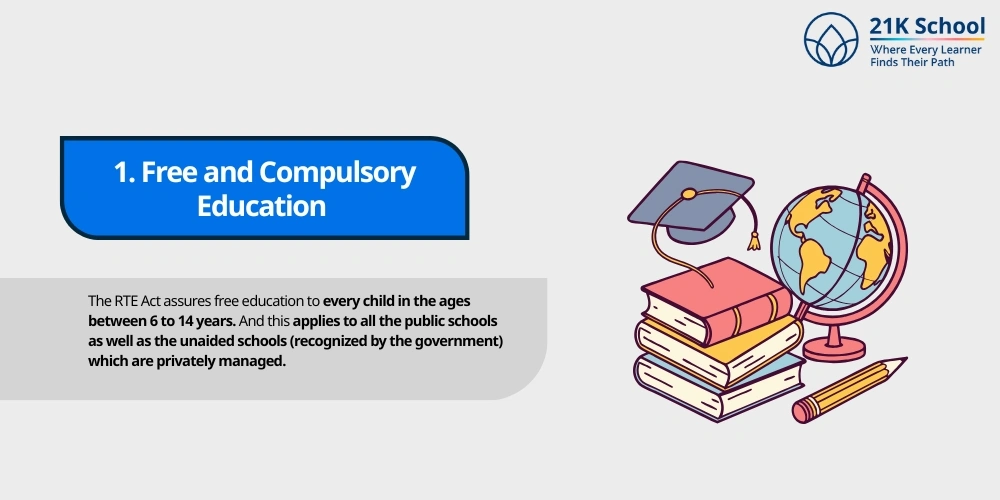
The RTE Act assures free education to every child in the ages between 6 to 14 years. And this applies to all the public schools as well as the unaided schools (recognized by the government) which are privately managed.
There is no requirement for a child to pay any form of fee or any other costs.
2. Age-Appropriate Admission & No Detention

The Act directs that children must be enrolled in the classes that are of their age. And no child can be detained or expelled till Class VIII. This allows the separation of failure without punishment and does promote retention.
3. Neighbourhood Schools
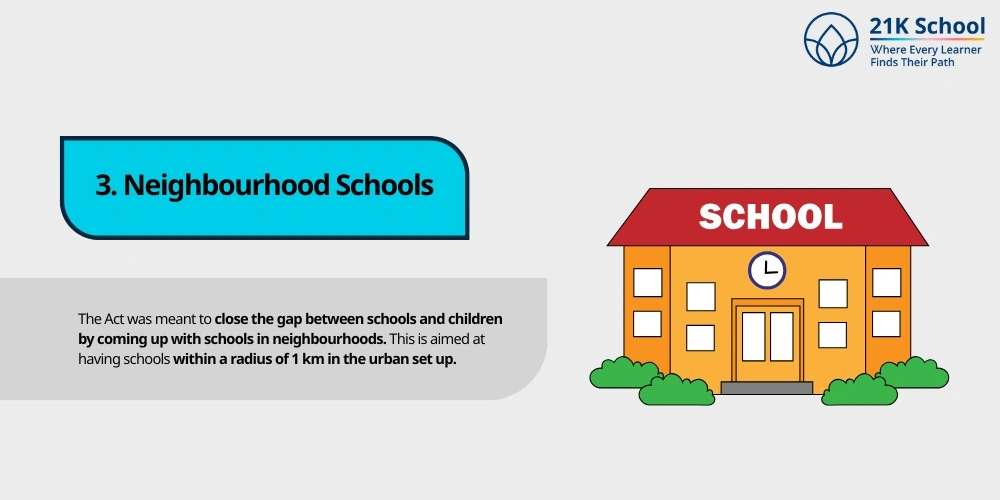
The Act was meant to close the gap between schools and children by coming up with schools in neighbourhoods. This is aimed at having schools within a radius of 1 km in the urban set up.
And that distance was stretched to 3km in the rural setting, so that education is easily accessible.
4. Free of Cost and Charges
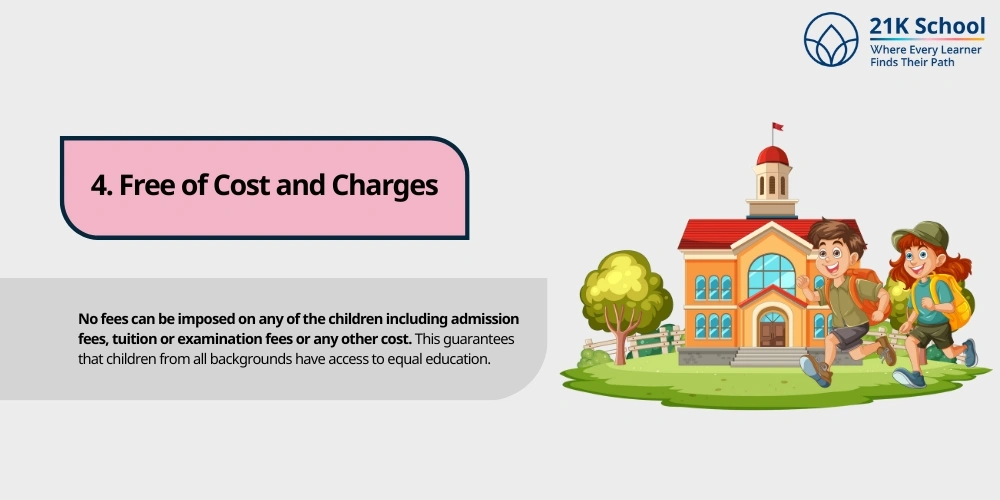
No fees can be imposed on any of the children including admission fees, tuition or examination fees or any other cost. This guarantees that children from all backgrounds have access to equal education.
Especially to those born in poor families, should not lack a chance to have an education because of lack of money.
5. Qualification and Allocation of Teachers
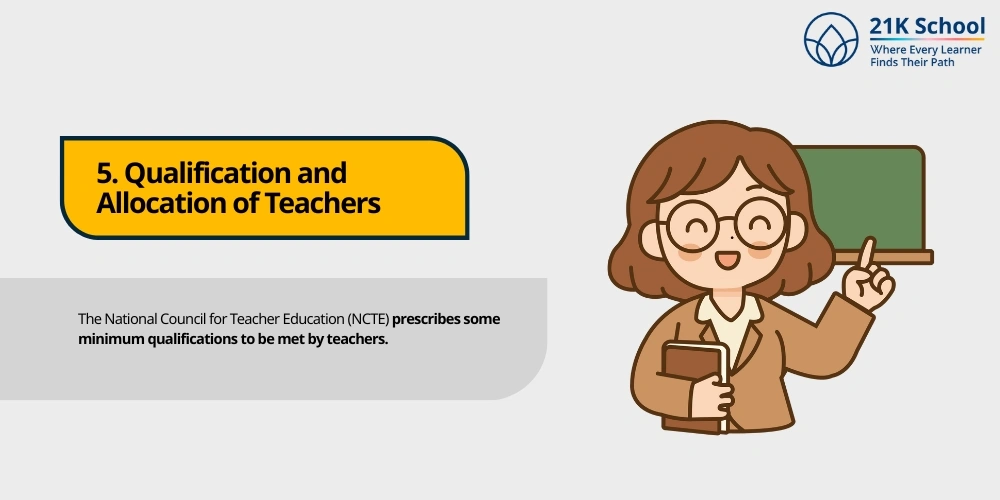
The National Council for Teacher Education (NCTE) prescribes some minimum qualifications to be met by teachers. The Act also defines when schools should be equipped with proper teacher-student ratio to make learning successful.
6. Continuous and Comprehensive Evaluation (CCE)
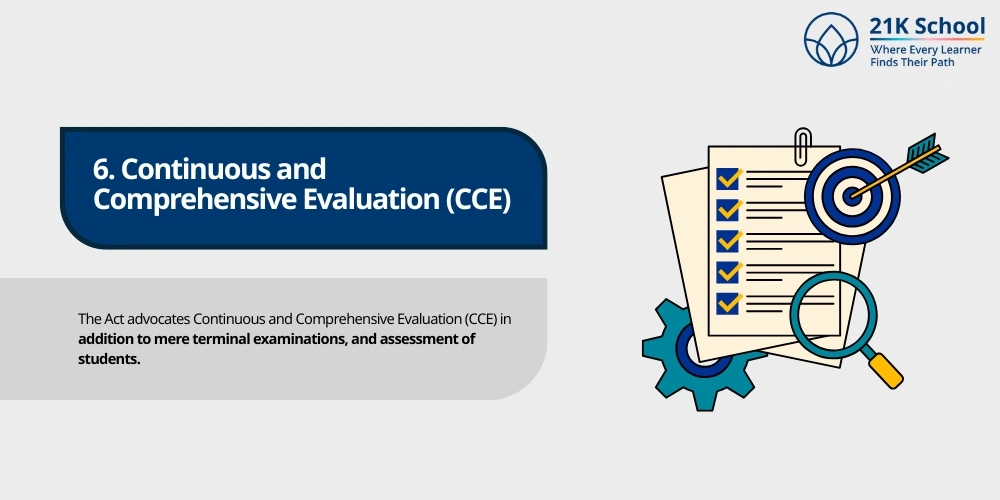
The Act advocates Continuous and Comprehensive Evaluation (CCE) in addition to mere terminal examinations, and assessment of students. It is conducted on both academic and non-academic parameters to encourage all-round development.
7. School Management Committee (SMCs)
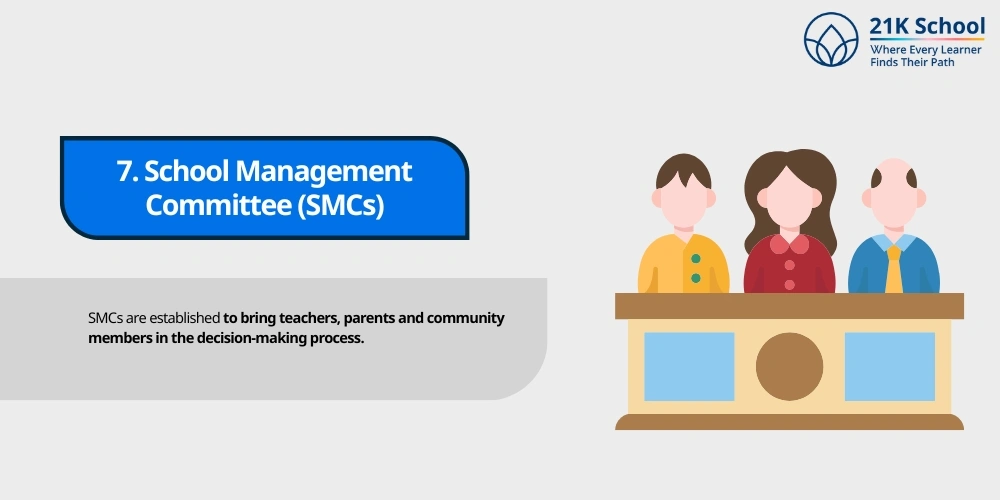
SMCs are established to bring teachers, parents and community members in the decision-making process. It is their role to guarantee functionality and quality of the school including budgeting and some curriculum related decisions.
8. Banning of Screening Procedures
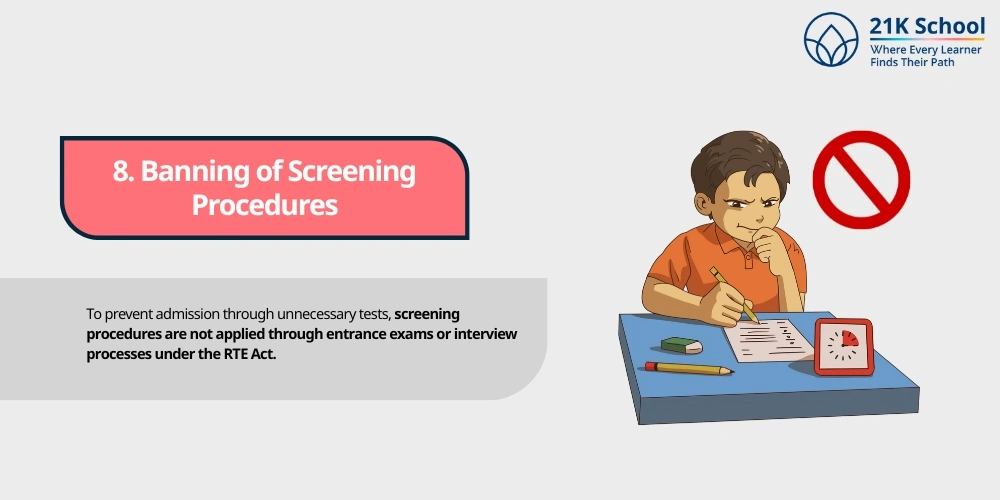
To prevent admission through unnecessary tests, screening procedures are not applied through entrance exams or interview processes under the RTE Act.
9. No Corporal Punishment, no Expulsion
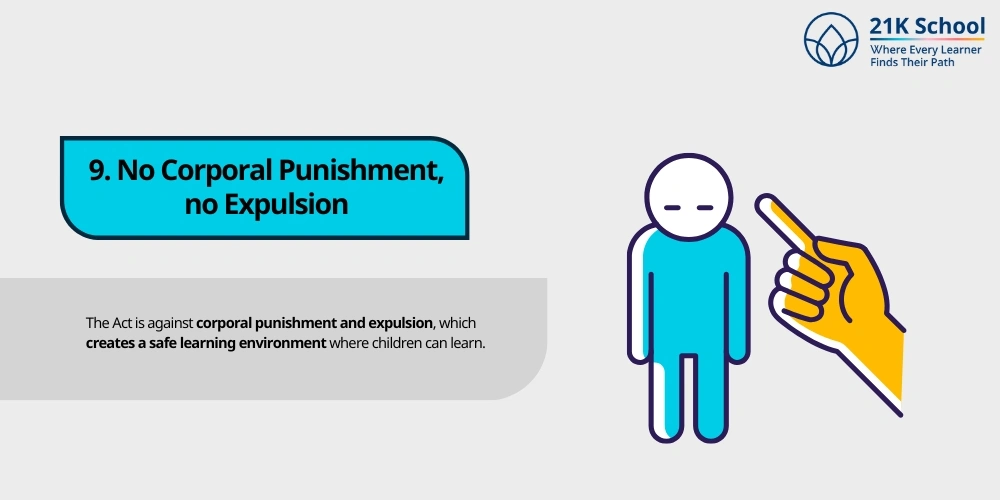
The Act is against corporal punishment and expulsion, which creates a safe learning environment where children can learn.
10. Emphasis on All-Round Development
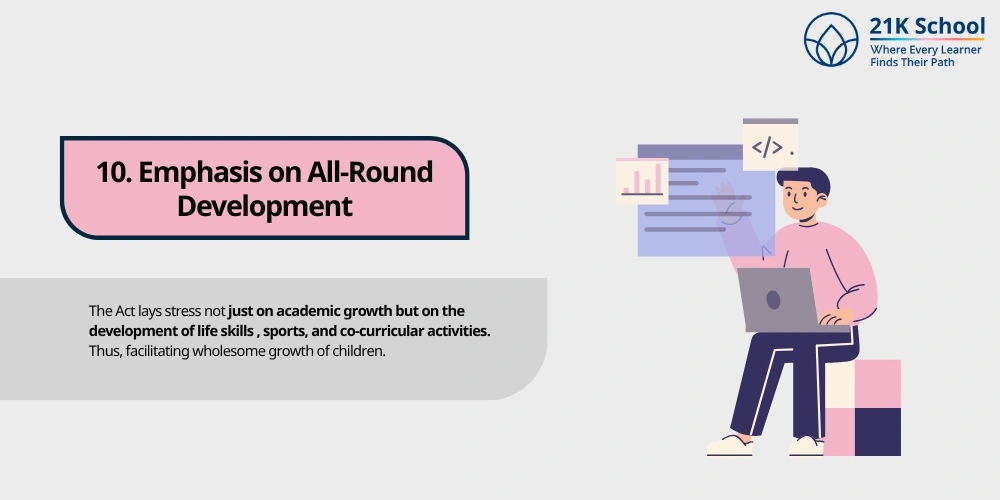
The Act lays stress not just on academic growth but on the development of life skills , sports, and co-curricular activities . Thus, facilitating wholesome growth of children.
11. 25% Reservation Private School
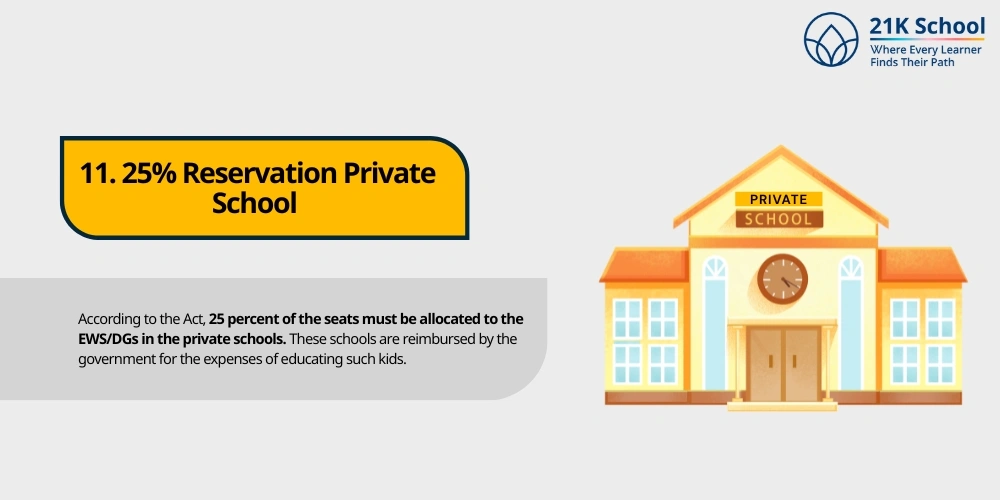
According to the Act, 25 percent of the seats must be allocated to the EWS/DGs in the private schools. These schools are reimbursed by the government for the expenses of educating such kids.
12. Minimum Standards

The Act is specific on the minimum infrastructure level of schools. Be it in terms of classrooms, toilets, drinking water and playground space, to provide conducive learning environments.
Importance of Right to Education Act
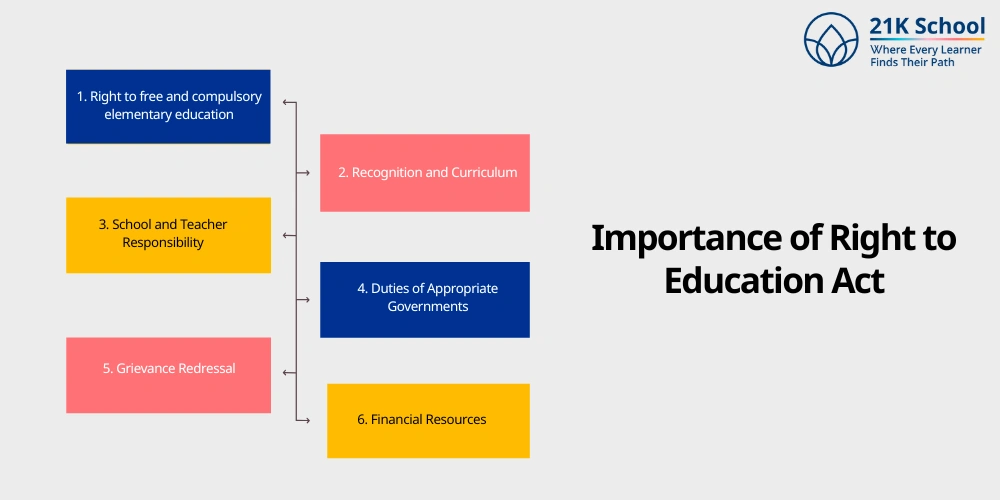
The Right to Education Act is a revolutionary bill to ensure that all children are entitled to education not as a privilege. Importance of the Act can be grasped in the following ways:
1. Right to free and compulsory elementary education
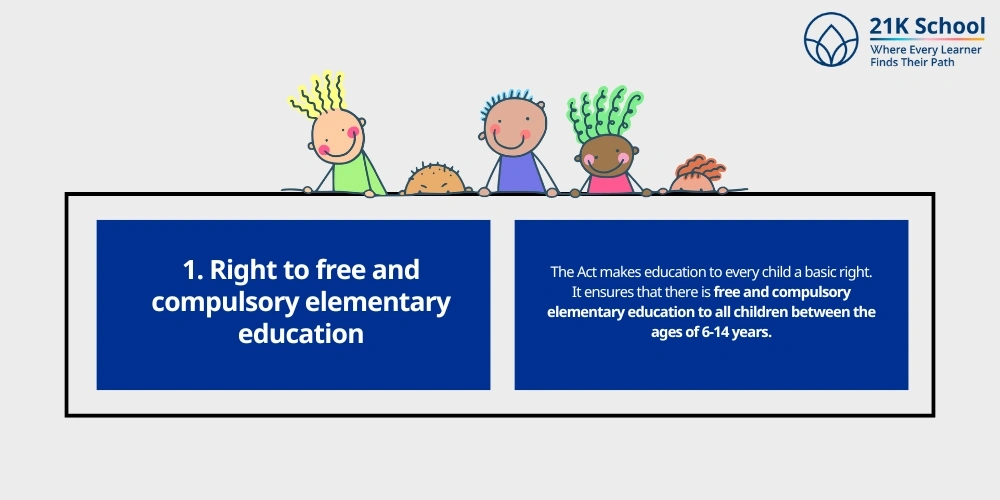
The Act makes education to every child a basic right. It ensures that there is free and compulsory elementary education to all children between the ages of 6-14 years. Hence leaving no child out because of financial or social reasons.
2. Recognition and Curriculum
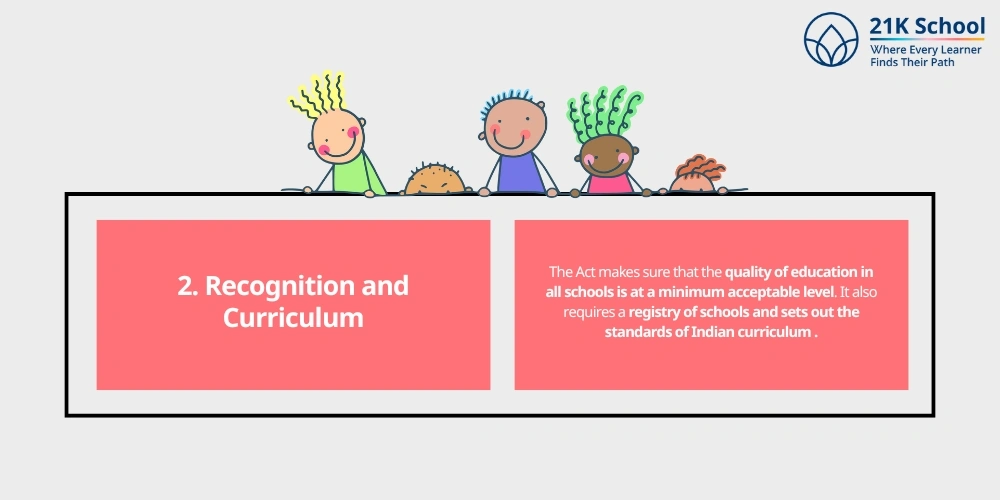
The Act makes sure that the quality of education in all schools is at a minimum acceptable level. It also requires a registry of schools and sets out the standards of Indian curriculum . Thus providing a level playing field to all institutions of learning.
3. School and Teacher Responsibility
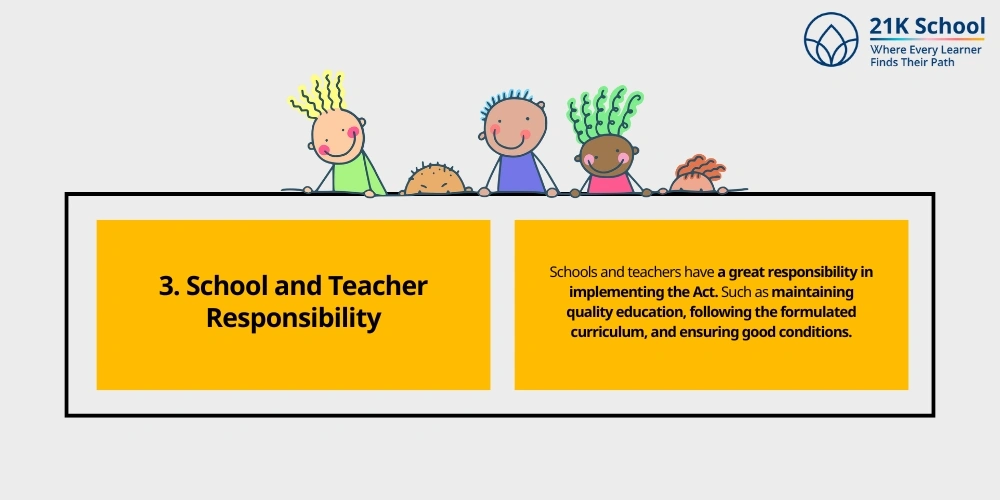
Schools and teachers have a great responsibility in implementing the Act. Such as maintaining quality education, following the formulated curriculum, and ensuring good conditions.
So that children can learn in a secure and positive learning environment .
4. Duties of Appropriate Governments
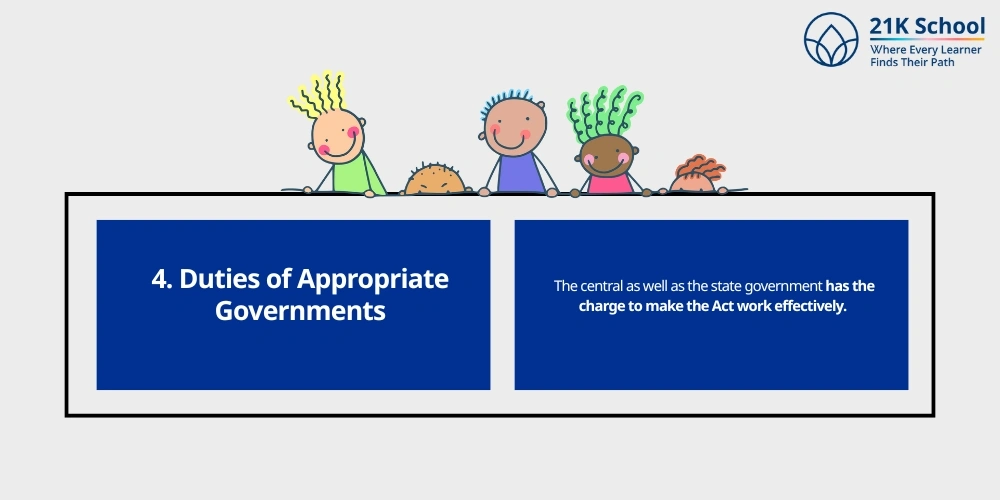
The central as well as the state government has the charge to make the Act work effectively. They have to work together to support it with proper funding, infrastructure and monitoring to ensure every child gets educated.
5. Grievance Redressal
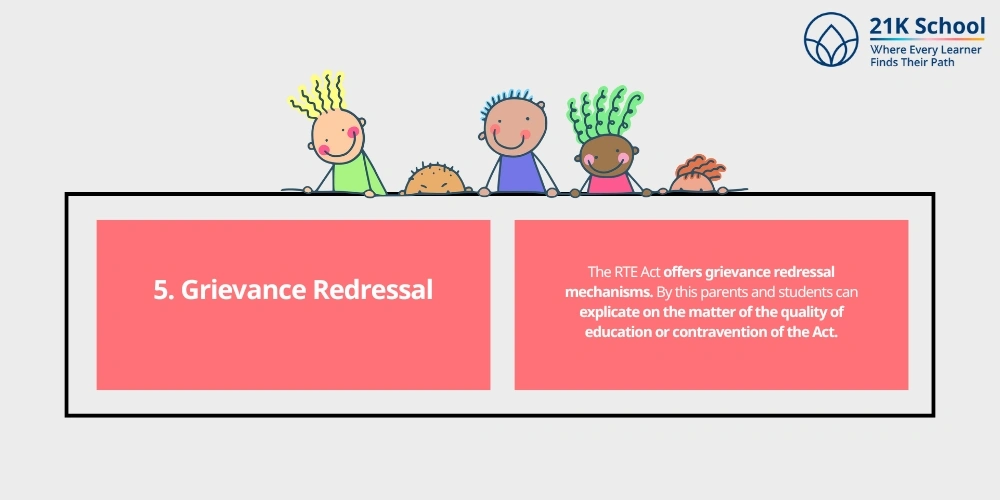
The RTE Act offers grievance redressal mechanisms. By this parents and students can explicate on the matter of the quality of education or contravention of the Act.
6. Financial Resources
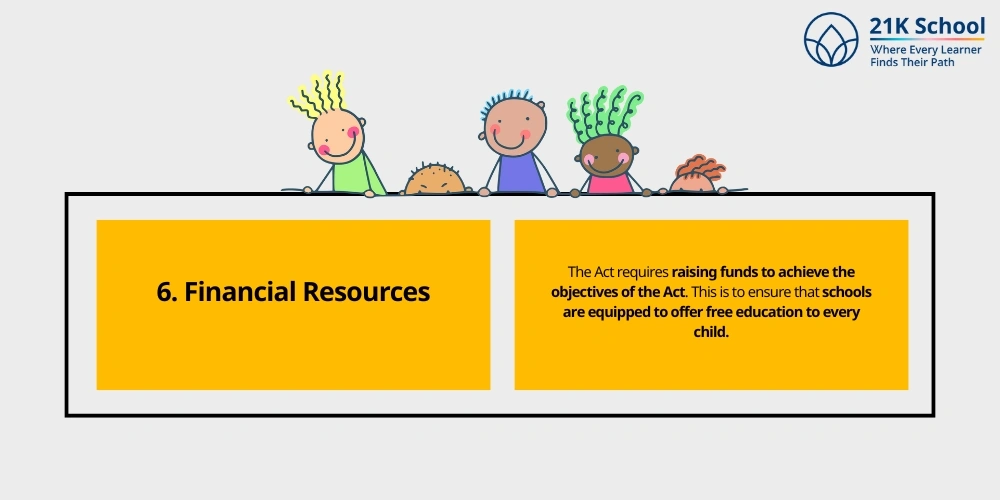
The Act requires raising funds to achieve the objectives of the Act. This is to ensure that schools are equipped to offer free education to every child.
Benefits of RTE
The benefits of Right to Education (RTE) Act covers free and compulsory education for children between the age 6 to 14 years, improved enrollment rate, 25% reservation for EWS in private schools, and others like:
- Free education: RTE ensures free and compulsory education with no fees for exams, tuition, or admission with free textbooks, materials, and uniform.
- Improved enrollment rate: RTE improves the accessibility of kids to schools and hence help children dream beyond their social-economic status.
- Social equity: RTE ensures social equity by ensuring 25% reservation for kids from EWS background in private schools.
- Inclusive education: RTE ensures that there is zero discrimination in schools based on gender, color, or other parameters like detention until class 8 for reducing the dropout rates.
- Improved enrollment and literacy: RTE focuses on the significant rise in the school enrollment and literacy rates across India while maintaining the teacher-student ratio (30:1), curriculum standards, and mandating minimum infrastructure.
Implementation & Impact of RTE in India
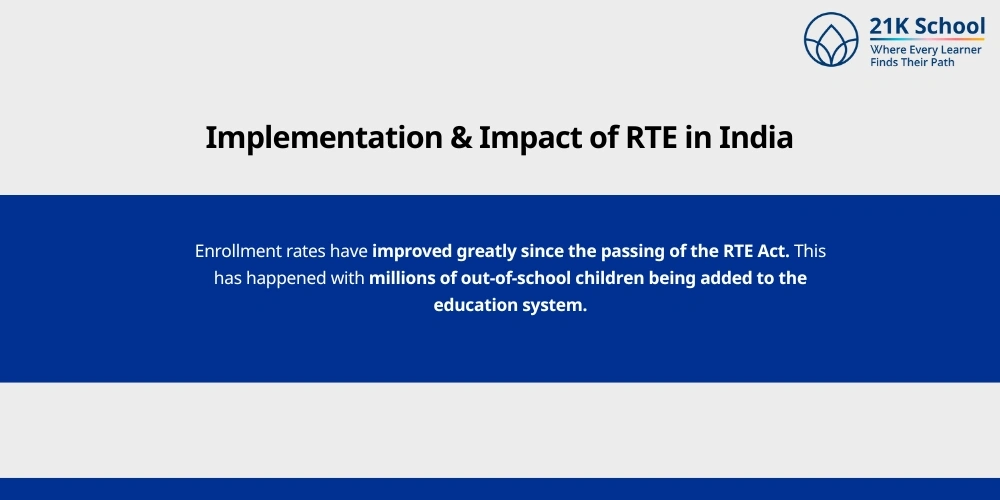
Enrollment rates have improved greatly since the passing of the RTE Act. This has happened with millions of out-of-school children being added to the education system.
But with it there has also been less smooth execution. The problems like the absence of infrastructure, scarcity of qualified teachers, and disparity of implementation in states persist.
RTE Act vs NEP 2020
The main aim of the RTE Act is to achieve free and compulsory education. However, the National Education Policy (NEP) 2020 seeks to present a flexible, multidisciplinary, and holistic education system. The table of comparison can be seen below:
| Aspect | RTE Act, 2009 | NEP 2020 |
| Focus | Ensuring free and compulsory education | Holistic development, quality education |
| Scope | Primarily elementary education | Covers all levels of education (pre-school to university) |
| Curriculum | Standardized curriculum for all schools | Focuses on continuous professional development |
| Teacher Training | Specifies minimum qualifications | Focuses on continuous professional development |
| Assessment | Continuous and Comprehensive Evaluation | Focus on holistic, competency-based evaluation |
| Private Schools | 25% reservation for EWS children | Emphasizes flexibility and greater autonomy for private schools |
| Language | No clear stance on language policy | Promotes mother-tongue as medium of instruction |
Here are the latest details of National Education Policy , that infers these criteria along with empowering children.
Challenges of Right to Education Act
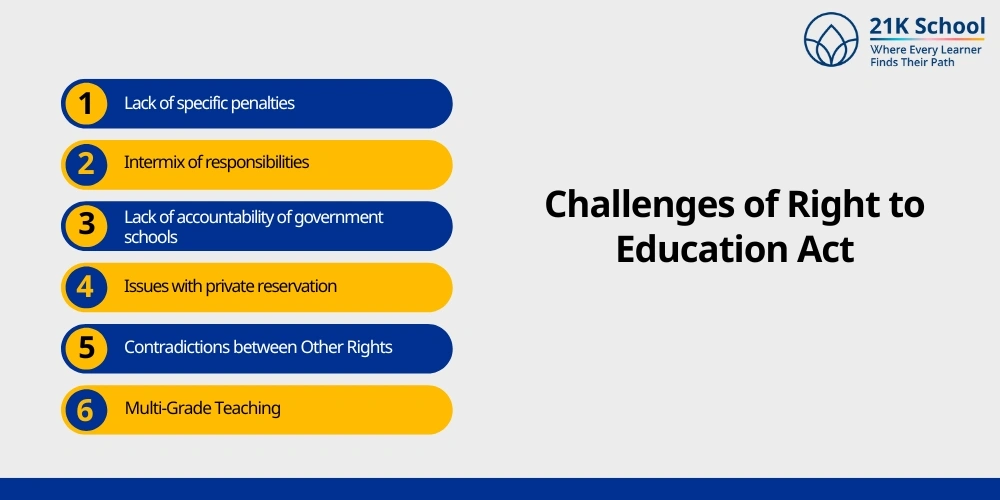
As much as the RTE Act has made considerable improvements in access to education. Still there are certain impediments that hinder its full achievement and efficiency. Such challenges are:
1. Lack of specific penalties
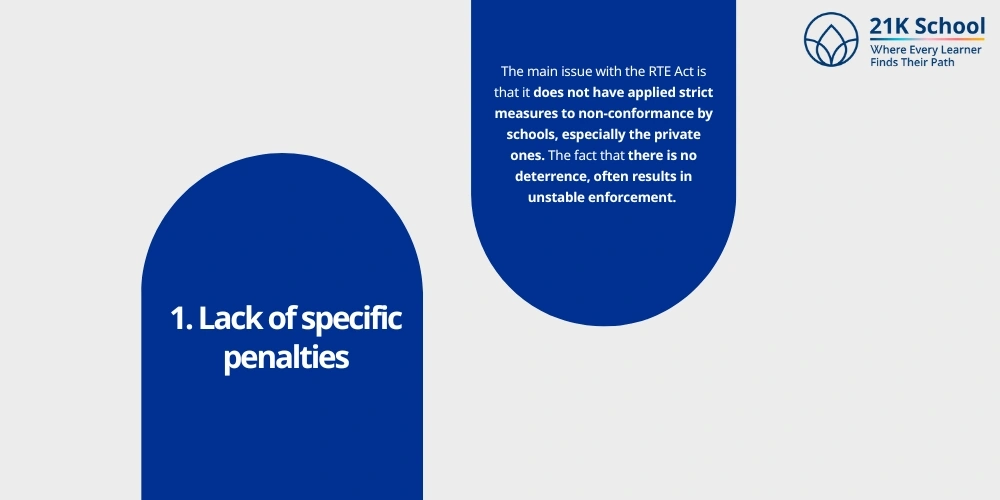
The main issue with the RTE Act is that it does not have applied strict measures to non-conformance by schools, especially the private ones. The fact that there is no deterrence, often results in unstable enforcement.
As schools do not adhere to policies such as 25% reservation or school infrastructure norms.
2. Intermix of responsibilities
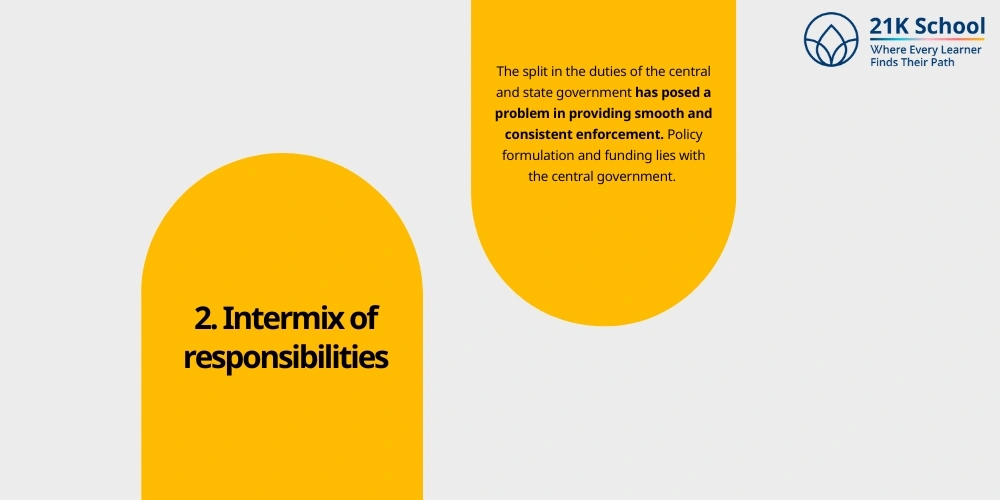
The split in the duties of the central and state government has posed a problem in providing smooth and consistent enforcement. Policy formulation and funding lies with the central government.
Whereas operational aspects like establishment of schools and tracking their performance lies with state governments.
3. Lack of accountability of government schools
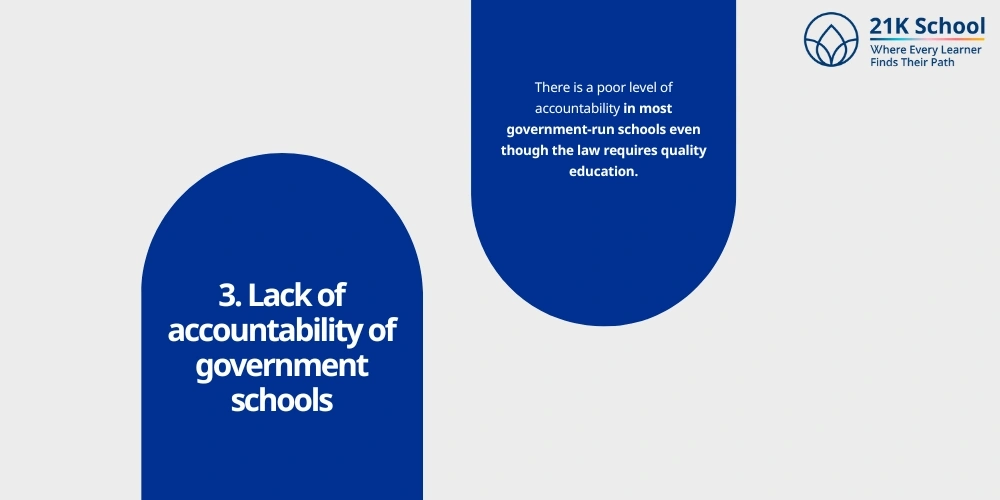
There is a poor level of accountability in most government-run schools even though the law requires quality education. These are problems such as teacher absenteeism, ineffective training, poor infrastructure especially in the rural locations.
4. Issues with private reservation
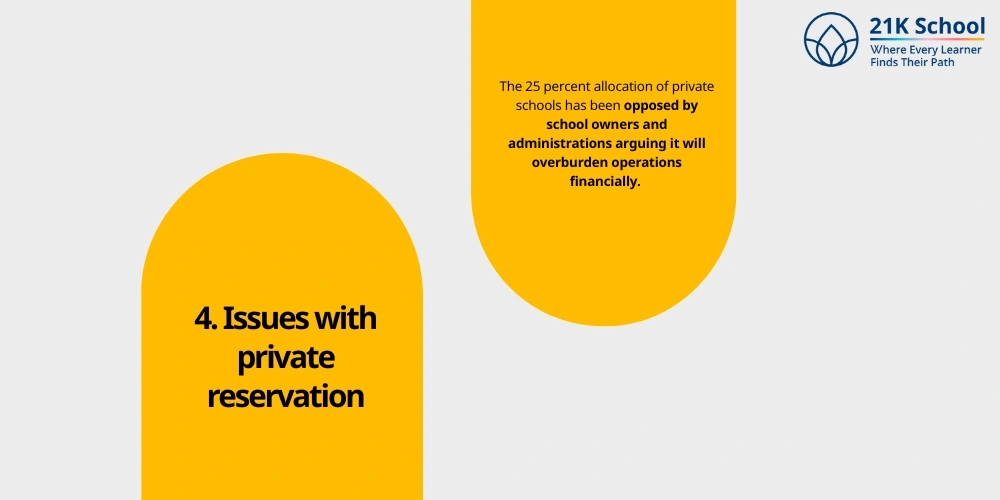
The 25 percent allocation of private schools has been opposed by school owners and administrations arguing it will overburden operations financially.
Globally, the government pledges to compensate schools in educating learners under this provision, but such payments have been lengthy and laborious.
5. Contradictions between Other Rights
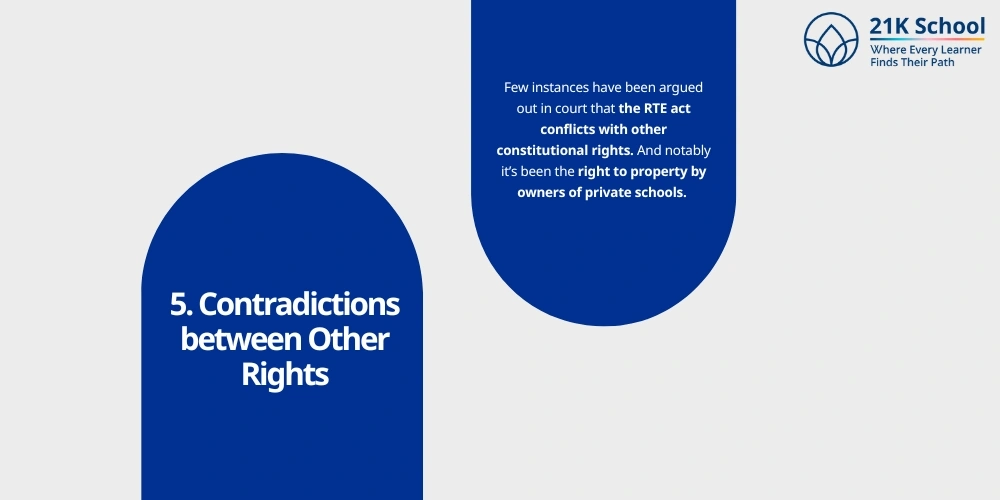
Few instances have been argued out in court that the RTE act conflicts with other constitutional rights. And notably it’s been the right to property by owners of private schools.
Schools have claimed that the 25% quota denies them their property rights. Since they are forced to educate the students without fair compensation or no compensation.
6. Multi-Grade Teaching
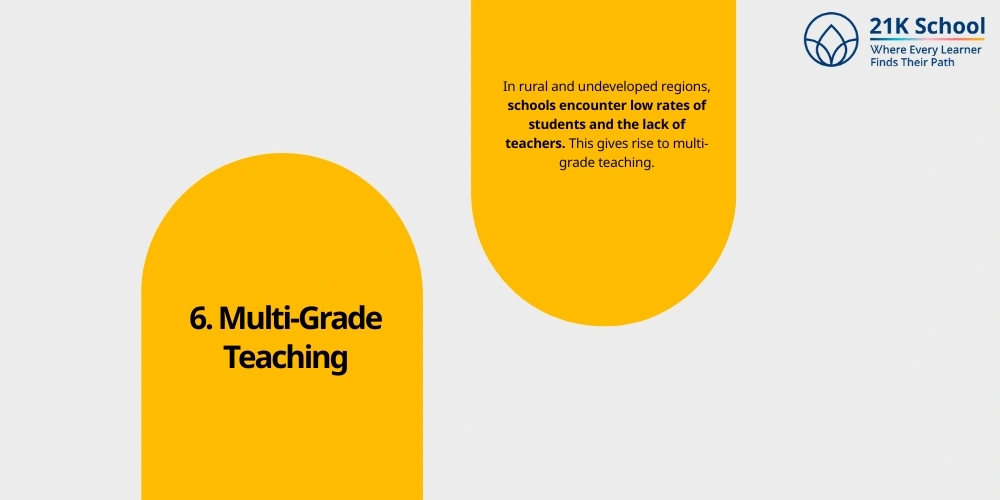
In rural and undeveloped regions, schools encounter low rates of students and the lack of teachers. This gives rise to multi-grade teaching.
In the system, only one teacher is there, teaching more than one class and this could drastically lower the impact of learning.
Wrapping Up Thoughts
The Right to Education Act has been a super historical event in providing education to all children in India. It has opened doors to an even-handed and inclusive education for children of school-going age.
It can be seen that there has been relative success in realizing an increase in enrollments and less dropout rates. However, the implementation and quality-related issues still exist.
The NEP 2020, which is broad based, supports the objectives of the RTE Act. It does so in providing comprehensive education and in enhancing the learning outcomes.
The synergy between the RTE Act and NEP 2020 can change the paradigm in education in India. And education can be built as an instrument of social mobility and nation-building.

